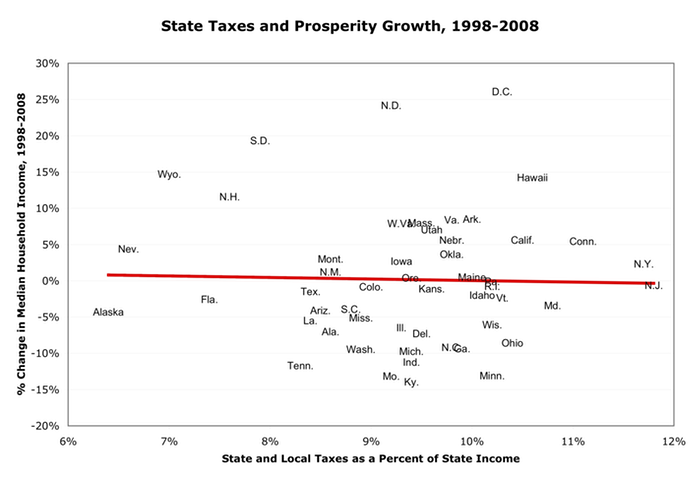Following up on yesterday’s post comparing state tax rates and prosperity (answer: higher-taxing states are more prosperous [or vice versa. <g>]), I wondered about the same comparison with prosperity growth.
Again I used median household income, because it’s a good measure of widespread prosperity, a.k.a. The American Dream.
Here’s the story:
In aggregate, there’s no discernible difference between growth rates for low- and high-taxing states, despite quite large differences in taxation levels. The correlation is -.03. That yields a two-tailed p value of .85, meaning that there’s 85-in-100 odds that the (tiny) correlation is just random chance.
As usual, this is just one slice of the data, analyzed in one way. It’s only worth paying attention to because it sings exactly the same song as dozens of other slices, analyzed dozens of other ways.
Update 8/16: To see the correlations for many more periods, click here.

Comments
5 responses to “Do Lower-Taxing States Grow Faster? No.”
If you plot the trends of median income vs. state taxes from 1998 to 2006 (2007-8 were unusual years in terms of economy) You see a clear trend .. dont have a P-value for that though. Could you repost with trend data from 2006-1998 with the P-value?
Thanks
@Iyer
You got me wondering:
http://www.asymptosis.com/state-taxes-and-prosperity-revisited.html
Sure, but the residents got to keep more of their earnings and therefore do earn more! Unless thats included in the data set.
@Erik
That assumes that the services that government provides have no value.
[…] asked in the comments to a recent post on state taxes and prosperity whether the picture would change if we looked at a […]